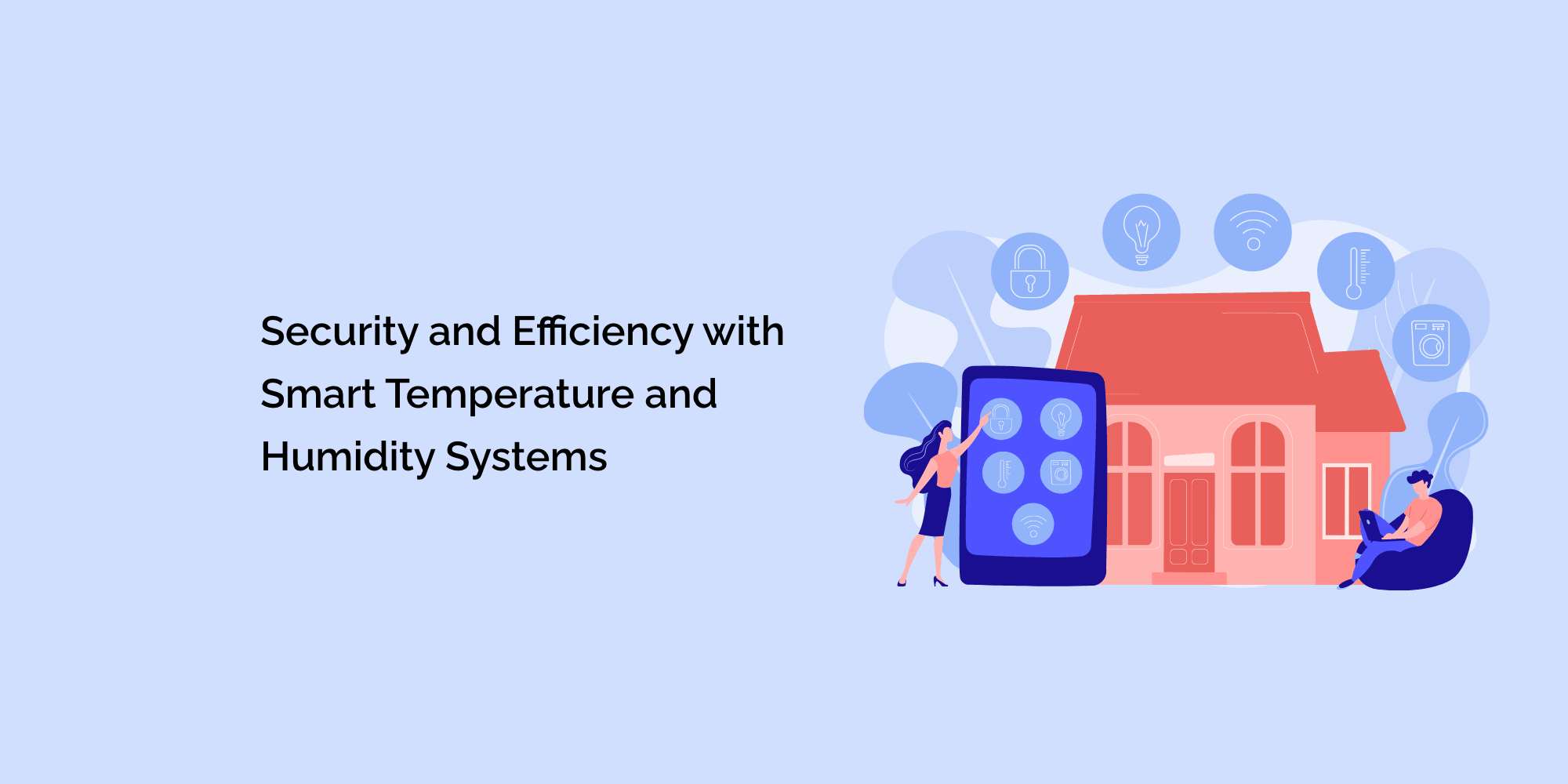The evolution of smart home technology has ushered in a new era of convenience, security, and efficiency. While smart devices have been primarily associated with security systems and energy management, the integration of smart temperature and humidity systems is adding another layer of innovation to our homes. This blog explores how these systems are enhancing both the security and efficiency aspects of our living spaces, creating a harmonious blend of comfort and intelligence.
Smart Technology: Beyond Convenience
Smart technology has evolved far beyond mere convenience. Today, it's about creating environments that cater to our needs while also providing security, energy efficiency, and enhanced well-being. Smart temperature and humidity systems are playing a pivotal role in achieving these goals, transforming our homes into spaces that actively safeguard our comfort and optimize our resource usage.
The Dual Role of Smart Temperature and Humidity Systems
Smart temperature and humidity systems have the unique ability to address both comfort and efficiency. While they ensure that our homes remain at the desired temperature and humidity levels, they also contribute to energy conservation and indoor air quality improvements.
The Link Between Comfort and Security
The comfort of our living spaces is intricately linked to security. Feeling comfortable in our homes contributes to our overall well-being and allows us to relax. By maintaining optimal temperature and humidity levels, smart systems create an environment that promotes relaxation and reduces stress—an essential component of feeling secure.
Enhancing Indoor Air Quality
Indoor air quality plays a crucial role in our health and comfort. Poor air quality can lead to allergies, respiratory problems, and discomfort. Smart systems that monitor and adjust humidity levels contribute to better indoor air quality by preventing the growth of mold, dust mites, and other allergens.
Energy Efficiency and Cost Savings
Efficiency is a central aspect of smart technology, and smart temperature and humidity systems are no exception. By optimizing heating and cooling based on real-time data, these systems prevent energy wastage and result in lower utility bills. This energy efficiency contributes to a more sustainable and eco-friendly home.
Integration with Security Systems
The integration of smart temperature and humidity systems with security systems adds an extra layer of protection. For instance, sudden changes in temperature or humidity levels could indicate potential threats such as fires, leaks, or intruders. When connected to security systems, these changes can trigger alerts, enabling swift action to address the issue.
Customized Comfort and Security Profiles
Smart systems allow homeowners to create customized profiles that align with their preferences. This includes not only preferred temperature and humidity levels but also security settings. For example, when you're away, the system can adjust settings to minimize energy usage while also maintaining a secure environment.
Real-Time Monitoring and Alerts
Real-time monitoring is a hallmark of smart technology. Temperature and humidity systems continuously gather data and provide alerts in case of deviations from set parameters. This proactive approach ensures that homeowners are promptly informed of any potential issues.
Remote Access and Peace of Mind
Remote access is a significant advantage offered by smart temperature and humidity systems. Through mobile apps, homeowners can monitor and adjust settings even when they're away. This level of control provides peace of mind, knowing that their home environment is secure and optimized.
Data-Driven Insights for Improved Efficiency
Smart systems collect a wealth of data over time, providing insights into usage patterns and efficiency trends. By analyzing this data, homeowners can make informed decisions about their energy consumption and adjust settings to further enhance efficiency.
Future Possibilities: AI and Predictive Analysis
As smart technology advances, the incorporation of artificial intelligence (AI) and predictive analysis holds exciting possibilities. AI algorithms can learn from usage patterns and external factors to predict temperature and humidity needs, ensuring an environment that seamlessly adjusts to our preferences.
Conclusion
Smart temperature and humidity systems exemplify the fusion of comfort, security, and efficiency in modern homes. These systems create an environment that not only meets our physical and emotional needs but also enhances the overall living experience. As we continue to integrate these technologies into our homes, we embark on a journey toward spaces that are not just smart but also intuitive, actively working to ensure our well-being, security, and resource optimization.








